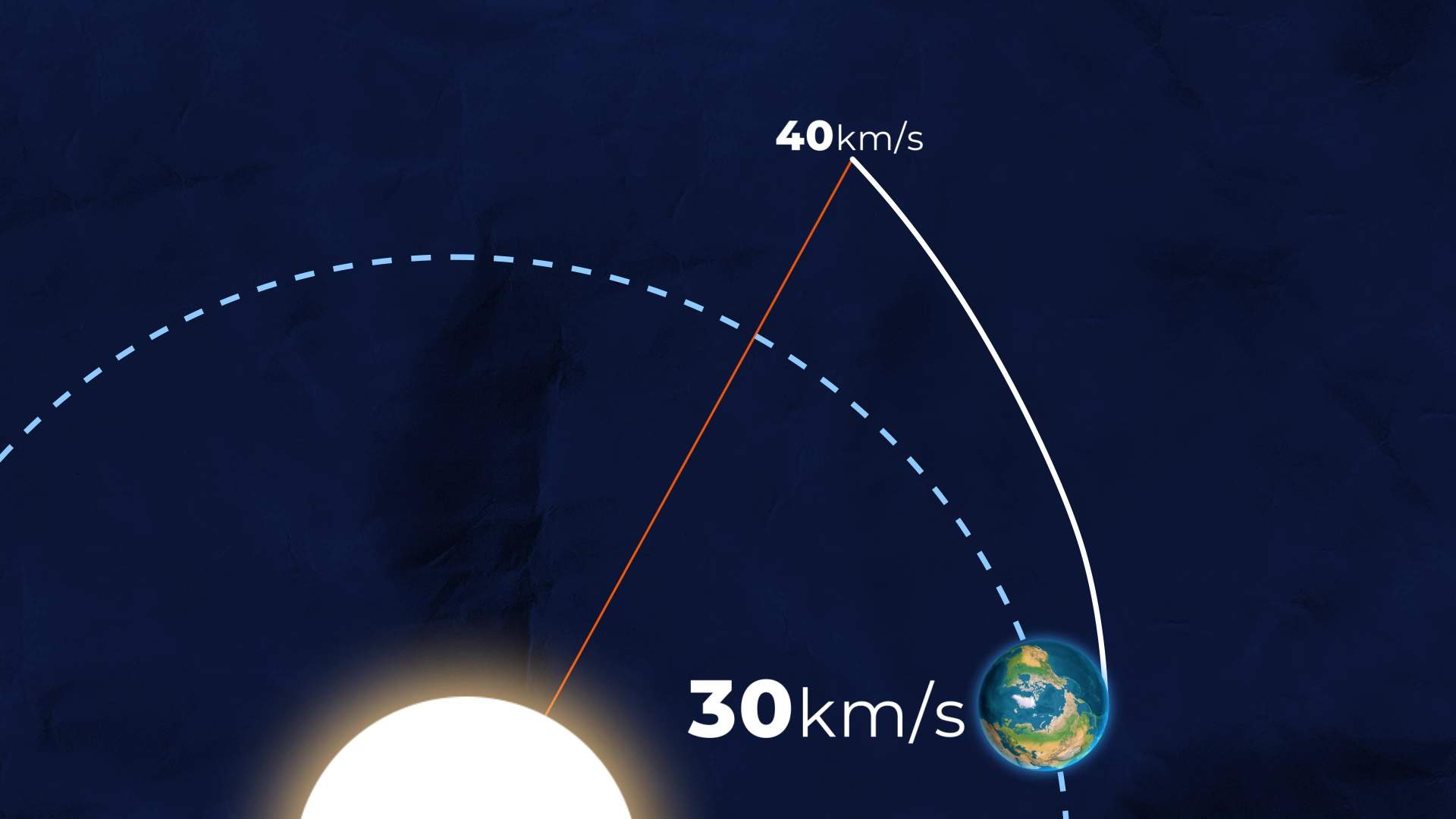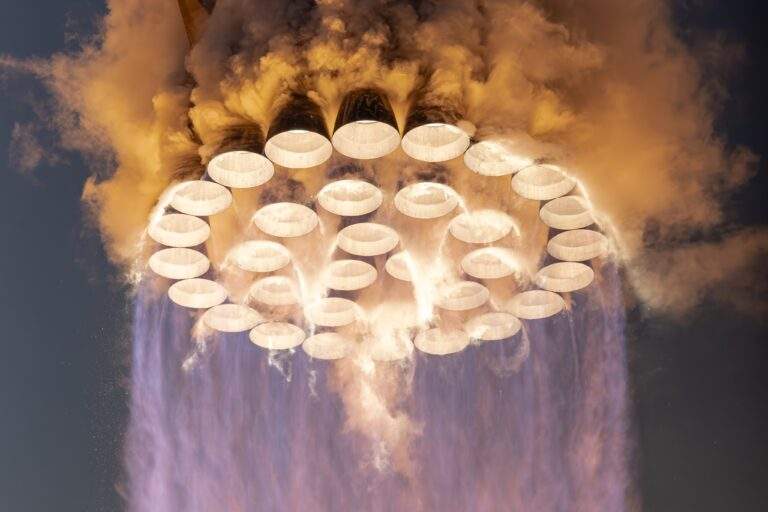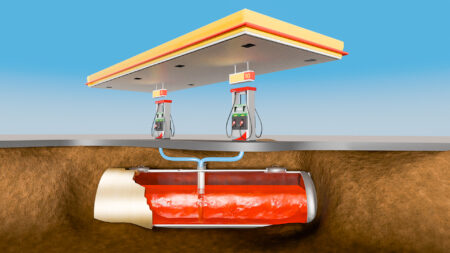In Augst 1989, Voyager 2 flew past planet Neptune, the furthest planet in our solar system. It was the first time that any spacecraft had made the 4 BILLION kilometer journey and very little was known about this gas giant at the time. Neptune is so far away that it has only completed a single orbit of the Sun since we discovered it back in 1846.
The true scale of our solar system is impossible for us to comprehend – and due to the laws of physics, navigating this huge expanse is anything but straight forward. Nevertheless, in August 1977, the Voyager 2 space probe began an incredible lifelong journey that would take it all the way through our solar system and beyond. Today, the space probe is some 20 BILLION kilometers from Earth. But how did it get to this point?
Rare planetary alignment
In the mid 60’s, a NASA engineer discovered that a rare alignment of our 4 biggest planets was about to take place. This alignment only happened every 175 years, and it would allow a spacecraft to visit all 4 of these giant planets in a single mission. And so, it was up to Voyager 2 to take on this challenge. But in order to get there, Voyager 2 had to thread the needle through space, perform four gravity assists and escape the Sun’s gravity.
The planets in our solar system are constantly being pulled in by the Sun. But since they are also moving sideways very quickly, their motion fights against the Sun’s pull, keeping them in a constant orbit. Without this velocity, objects in space would simply be dragged straight into the Sun. But if an object is traveling fast enough, it can outpace the Sun’s pull, allowing it to completely break free and travel beyond our solar system. And so Voyager 2 needed to go fast enough to escape the Sun’s gravity.

The closer an object is to the Sun, the more it will get pulled in. The Sun’s gravity creates a deep well in the fabric of space, which we can essentially think of as a hill. An object trying to escape from the bottom of the hill will need much more velocity than one escaping from the top. To put this into perspective, Mercury, the closest planet to the Sun, needs to move at 47 kilometers per second to stop it getting dragged in.
Neptune on the other hand only needs to move at 5 kilometers per second. If Neptune had the same velocity as Mercury, it would very quickly escape the Sun’s gravity and disappear into space. Since Earth is still relatively close to the Sun, Voyager needed a lot of energy to escape.
None of the rockets around at the time were powerful enough to do this. But due to this incredible alignment, Voyager could use gravity assists to slingshot itself from planet to planet, increasing its speed along the way.
Voyager 2 launches
In order for Voyager to leave our solar system, it had to exceed the Sun’s escape velocity – which at the distance of Earth was around 42 kilometers per second. Despite launching on the most powerful rocket around at the time, it could only provide a delta-v of around 10 kilometers per second.
This may not sound like a lot, but Earth was already moving around the Sun at 30 kilometers per second. So by launching Voyager in the direction of Earth’s travel, it took advantage of this velocity allowing it to reach around 40 kilometers per second relative to the Sun.

This was enough to escape Earth’s gravity and place it into a very large orbit around the Sun, one that would take it well past the distance of Mars. Under normal circumstances, it would remain in this orbit indefinitely. But since it was trying to get a gravity assist from Jupiter, it aimed itself at the point where Jupiter was going to be by the time it arrived.
However, despite the sheer scale of the area around Jupiter, Voyager had to thread itself through a very narrow 150 km wide corridor and arrive at a specific point to the nearest second, all whilst traveling at 10 kilometers per second. If Voyager missed this point or was a few seconds off, it would have ruined the gravity assist and its following gravity assist around Saturn. In order to achieve such incredible accuracy, Voyager had to know its exact location in space and control its speed with great precision.
Voyager 2’s thrusters
5 sets of thrusters placed around the space probe would allow Voyager 2 to rotate around all three of its axes. This was super important since its large antenna had to be constantly facing Earth in order to send and receive signals. These thrusters would fire tiny millisecond pulses, rotating Voyager at around 0.3 degrees a second.
At this rate it would take an entire 5 minutes just to turn 90 degrees. Then, there was another set of identical thrusters that could be fired for longer durations to alter Voyager’s speed, allowing NASA to finely control its trajectory over time. But how did Voyager actually know where it was and where it was going?

Located on Voyager’s antenna was a device called a sun sensor. It detected the Sun as the brightest object in space and commanded Voyager to rotate until it locked onto it. This would correctly align the X and Y axes and ensure that Voyager’s antenna was facing Earth.
In order to sort out the roll axis, a star tracker facing 90 degrees away from the Sun sensor would look for a specific star which had a known level of brightness. Again, Voyager would rotate around this axis until it locked onto this star. But Voyager couldn’t always rely on these systems.
Any time Voyager 2 passed by a planet, its Sun sensor would be temporarily blocked. Likewise, when Voyager rotated to take pictures of specific targets, both sensors would no longer be facing their reference points.
And so, to keep track of how much Voyager had rotated, it had an onboard gyroscope which could be used for several hours at a time. This was a disc mounted on a 3 axis gimbal. When activated, the disc would spin and its angular momentum would keep it perfectly stable. As Voyager rotated, the gimbals would rotate around this disc and a device would measure how much its orientation had changed. Voyager then knew exactly how much it had to rotate in order to return to its Earth facing position.
This entire system worked very well and gave Voyager a fixed orientation in space. But knowing the orientation was only part of the problem. In order to plot its trajectory, NASA needed to know how fast it was going.
They did this by sending a signal out to Voyager 2 and timing how quickly it would respond. Since each signal traveled at the speed of light, multiplying these two numbers would give them Voyager’s distance. Then they’d send another signal which would give them Voyager’s new distance. By subtracting these distances, they could figure out how much Voyager had traveled in that time. With this, a simple calculation would tell them how fast Voyager was traveling.
With all of these data points, NASA could continuously plot Voyager’s trajectory through space and see how it compared to the desired trajectory. If the space probe was a bit off, they could send a command to Voyager, which would fire up its thrusters to fix it. With this incredible system, Voyager arrived at its Jupiter target point just 1.4 seconds late and only 60 km off course.

Jupiter gravity assist
As Voyager 2 approached Jupiter, its speed had slowed considerably to around 10 kilometers per second as it reached the top of its orbit. This was now well below the Sun’s escape velocity, which at Jupiter’s distance, was around 18 kilometers per second. But as it got closer to Jupiter, its gravitational pull started to have an effect on the space probe.
Since Jupiter was already moving very fast in this direction, it pulled Voyager in and essentially multiplied its current speed with Jupiter’s speed, sending it off at an even greater velocity. We talked more about gravity assists in our article about the Artemis 1 mission. Voyager was now going faster than the Sun’s escape velocity and from this point onwards, it was destined to escape the solar system. But the journey wasn’t over yet.
Voyager went on to complete 2 more gravity assists around Saturn and Uranus making incredible discoveries along the way. The final gravity assist would be around Neptune, but this gravity assist would go a little bit differently.
Since there were no more planets to visit after Neptune, Voyager didn’t have to follow any particular path around Neptune. However, scientists were very interested in flying as close as possible to Triton, one of Neptune’s Moons. But Triton orbits at a steep angle and so getting close would require a dramatic change of direction.
And so instead of approaching from behind Neptune, Voyager 2 approached just a tiny bit in front, heading over the planet’s North pole. This was enough to bend Voyager’s trajectory downwards whilst also slowing it down. 5 hours later, Voyager flew past Triton – and from then on, began its lifelong journey into deep space. This epic journey took 12 years in total and the discoveries that Voyager made along the way taught us an incredible amount about our solar system.













This was the best description of gravity assist that I seen. I now understand how it works. Thank you.